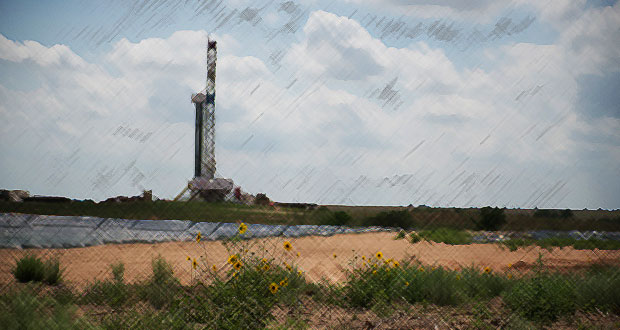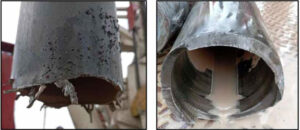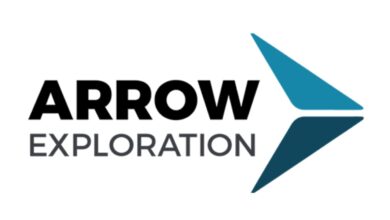Abrasive cutting technique on coiled tubing helps recover stuck drill pipe, BHA in Colombian well
Lost circulation and observation of gas inflow in the return line added to the complexity of executing the onshore recovery operation


By Stephen Whitfield, Associate Editor
Last year, Proshale, Frontera Energy and Estrella International Energy Services faced three significant operational issues during the drilling of a deviated well onshore Colombia – lost circulation, a stuck drill pipe and bottomhole assembly (BHA), and a gas inflow observed in the return line.
After several failed attempts to control the well and recover the BHA, the drill pipe got plugged, making it impossible to continue pumping control pills.
“You’re drilling a well, you reach the formation and you get stuck. You start seeing gas inflow on the surface. Now you’ve got two problems – you’re stuck in the BHA and you’ve got a well control issue. Then, when you try to control the well, you get some loss control material that blocks your BHA. So now you can neither control your well nor get your pipe free. That’s the scenario we had to figure out,” said Nestor Mesa, Country Manager for Colombia, Ecuador and Guyana at Proshale.
To recover the drill pipe and BHA and control the well, the companies utilized an abrasive cutting technique on coiled tubing with a slurry that could pump out the loss control material in the well and help control the gas inflow.
The well, which was drilled in the middle Magdalena Valley onshore Colombia, was planned to be drilled and completed in three sections: a 17½-in. hole with 133/8-in. casing down to 3,882 ft measured depth (MD), a 12¼-in. hole with 95/8-in. casing to 4,980-ft MD, and an 8½-in. hole with 7-in. casing to 5,377 ft. The drilling BHA of the last section included an 8½-in. PDC bit, eight ¼-in. float valves, a 6½-in. drill collar, an 8¼-in. stabilizer, float sub, and 6 9⁄16-in. drill pipe.
While drilling in the production formation at 5,123 MD, circulation was lost and the pipe became stuck. After several attempts to control the well, another issue appeared when the pumping pressure increased due to a plug in the inner diameter of the drill pipe, possibly because of large debris in the control fluid.
Mr Mesa, who spoke at the 2023 SPE/ICoTA Well Intervention Conference on 21 March, said the preparation and execution process of the operation involved a multi-disciplinary group including Proshale, the coiled-tubing company; Estrella, the thru-tubing company; and the operator Frontera.
The group first focused on cleaning the drill pipe to help control the well, Mr Mesa said, since freeing the BHA before controlling the well could potentially lead to the presence of inflow inside the drill pipe, which could result in a blowout. “One of the main issues for the operator was to control their well. They wanted to make sure that we could pump out the loss control material, and to do that we had to make sure the well was clean.” The cleanout removed the plug above the bit, which enabled the group to pump fluid with control material.
For the cleanout run, the group used a five-jet wash nozzle designed to pump any desired fluid, including a batch of acid if required, to clean the loss control material. The run was conducted in three steps. First, pump an 8.33-lb/gal brine at a high enough rate (67.6 ft/min, approximately four times the settling velocity of that the loss control material) to create turbulence. Second, a 30-ppt linear jellified fluid was pumped as a transition fluid, and lastly a 60-ppt jellified fluid was pumped to push the solids to the surface. With the drill string clean, the group attempted to establish circulation between the drill pipe and the open hole without success.
As the cleanout run was unsuccessful, the decision was made to use an abrasive cutting technology consisting of a slurry made of linear gel and sand pumped through a motor and a cutting head with two nozzles. This provided enough velocity (more than 550 ft/sec) and differential pressure (more than 2,500 psi) to the slurry to erode the drill pipe, Mr Mesa said. He added that the group used Mesh 100 natural sand in the slurry – this sand had a small and irregular grain that was ideal for obtaining a good erosion rate on the drill pipe.
Prior to the cutting procedure, the cleaning run was repeated three times, from surface to 5,100-ft depth, ensuring that the entire drill string was clean. Due to the uncontrolled environment in the annulus, during the cutting operation the choke at the surface needed to be actuated every time a pressure change was observed so that the overbalance could be conserved. Since the overbalance was needed, the selected rate for the job was 1.1 bbl/min.
The abrasive fluid was then pumped at 1.1 bbl/min, with pressures between 5,200 and 5,700 psi. Then the slurry was displaced with water until clean returns were observed. While typically the slurry in this cutting procedure would be collected at the surface, Mr Mesa said the presence of gas inflow at the surface prevented that from happening. “When you have gas in the annulus, the gas inflow that we saw with this well, pretty much all the slurry we’re injecting is going to go into the annulus. In that case, that’s what we wanted to happen. That was a sign that we were controlling the well with the slurry.”
The BHA was pulled out of the hole and, once at surface, was inspected. Mr Mesa said that wear was seen in the cutter, resulting from the splash back of the slurry. The rig then started to work the string with overpull (between 100,000 and 140,000 lb) and torque, getting the string free after 1.2 hours. DC
More information can be found in SPE 212906, “Recover Stuck Drill Pipe in an Uncontrolled Well with Abrasive Cutting Technique on Coiled Tubing – Case Study.”




